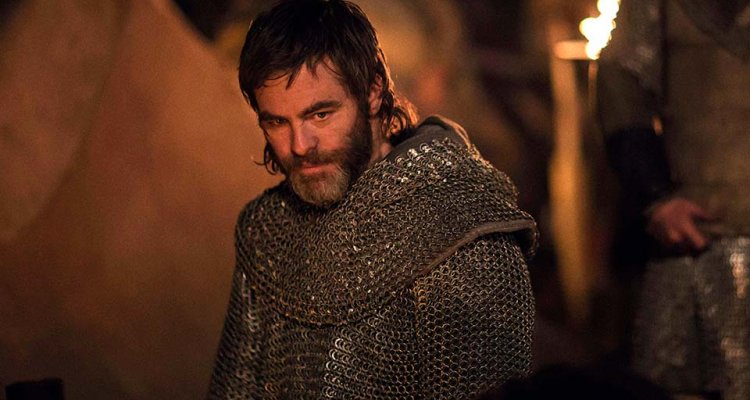David Mackenzie‘s latest film, “Outlaw King,” is a life-long passion project for the Scottish director of “Hell or High Water” and “Starred Up.” The new Netflix film takes place during the medieval years of the early 14th century and recounts the story of Robert the Bruce (Chris Pine), brother of William Wallace (made famous by Mel Gibson in the film “Braveheart“), who went from being king to an outlaw after murdering the high-ranking son of a powerful monarch
After a less-than-ideal premiere at this year’s Toronto International Film Festival, the filmmaker admitted that he rushed the movie to the festival by delivering what he called a “wet cut.” However, after the response at TIFF, Mackenzie went back to the editing bay and created a new cut of the highly-anticipated film. And this new version is tighter and more assembled than the one shown at the fall festival.
READ MORE: 16 Must-See Movies For November: ‘Favourite,’ ‘Widows,’ ‘Beale Street’ & More
Recently, I spoke to Mackenzie about the new cut of “Outlaw King,” the comparisons to “Braveheart,” and why the theatrical experience may very well be dead.
I saw “Outlaw King” at TIFF and then saw the newly edited version recently. I see why you would go back to the editing room, there are noticeable differences, it has improved, but what particularly made you want to re-edit the film?
I find in the TIFF version we had to rush. We had to make some rapid decisions to make the film ready. We screened it at TIFF and realized we had to go back to editing. We only had a week and a half to do it so we could get back to post-production mode, and we scratched a lot the itches I had anyway. You are actually one of the few people I’ve spoken to that have seen both versions so I’m glad to hear there was an improvement.
You had mentioned that you could feel the audience in Toronto not connecting with the film, can you elaborate on what you meant with that?
It’s easier to judge a certain film more than others. For example, with a comedy, you could hear the laughs and know if it works, but for this movie, you can feel the room, and you also feel a sense of pace. It’s an important part of what happens in a film, its connection to an audience that size, the big theater in TIFF did give us a lesson. I learned my lesson and it’s fantastic to go back in the editing room. The old saying “less is more” was very much true for the case of “Outlaw King.” I learned that some characters are stronger with less explanation than with more, which was a fascinating lesson to learn. We wanted to tell TIFF, “Here you go, enjoy it.” It’s the largest canvas I’ve ever worked on and we wanted to make the Scottish landscape feel epic. The film feels wide as possible, so I wanted it to play at one of the big film festivals, that’s why we sped it up to make Toronto.
There’s an impressive 8-minute single take that opens the film, how did you manage to pull that off?
The reason why I wanted to have a long-shot is because I wanted a place to start the movie and to end the movie. You want to be as accurate to the main events as possible. I wanted to cram in lots of info, the relationships between Robert and the prince. All the nobles also. And so, it was a chance to put all the information to the audience to show them what’s going on in a single scene. So much happens in that 8 minutes of continuing action.
Doing it was difficult. Having to incorporate a sword fight, a major fire blast, all that drama all at once was definitely ambitious. We started doing it in chunks. We had some great fortune, the weather got better. We did three takes and we used the second take. It’s just such a great feeling to do something like that and pull it off. A lot of the actors we used were from theater, so it was fun working with them on this endeavor. It was also frustrating because at times it didn’t work. I know that Chris [Pine] was frustrated at some point. What I love about those kinds of shots was the galvanizing effect of our team trying to get it right and it made us all come together in a very nice way.

